What Is a Unique Value Proposition
A unique value proposition (also called a UVP or value prop) is a clear statement that communicates the value of your product or service. It describes the benefits of your offer, how it solves customers’ problems, and why it’s different from other options.
Your UVP meaning is your answer to a simple question: why should a customer choose you over your competitors?
The unique value proposition for Semrush for Agencies appears on this landing page:
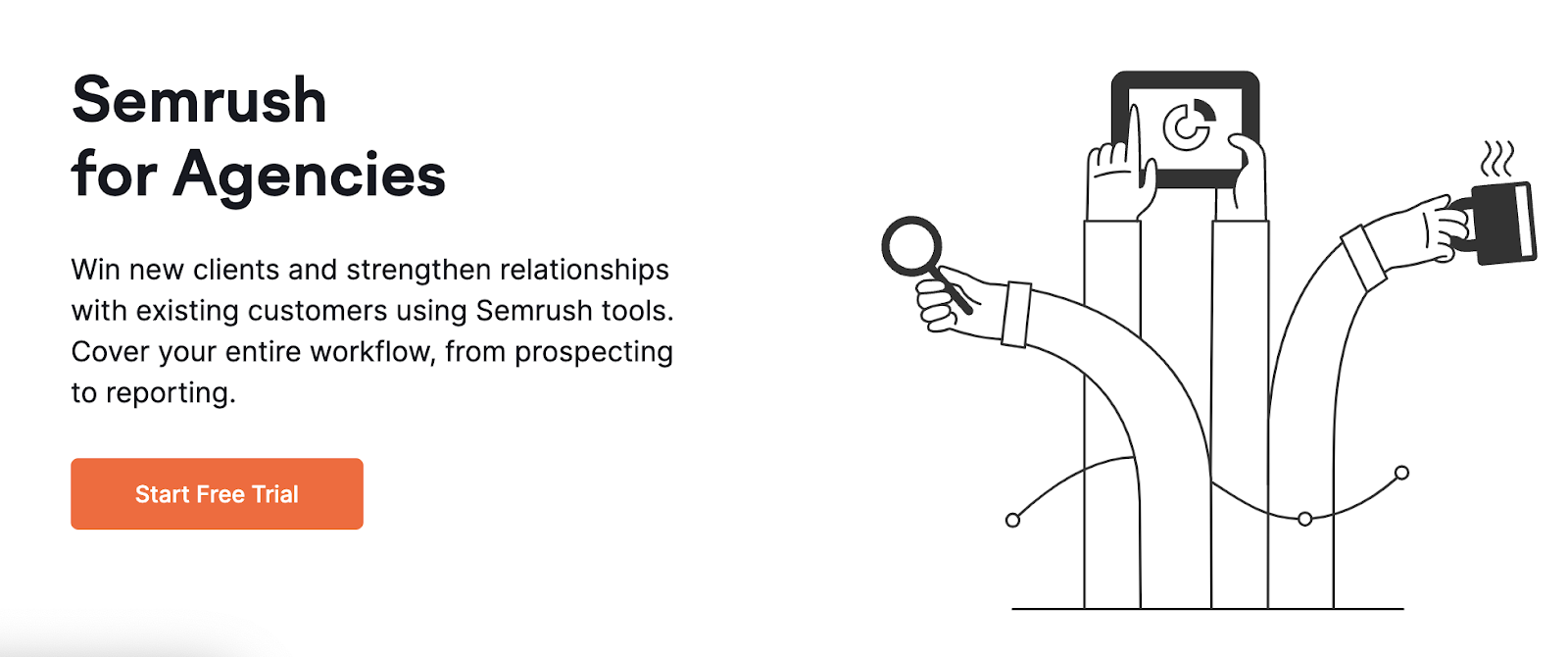
Customers typically compare several products or services before they decide on one.
Your UVP sets you apart from the competition.
It should be the first thing a visitor sees on your website homepage, product pages, and landing pages. And a cornerstone of your marketing campaigns.
A Unique Value Proposition Is Not a Mission Statement or Tagline
A UVP tells customers what you offer and why they should choose you. Mission statements and taglines influence customers in a similar way.
But there’s a difference in how they work compared to a value proposition.
A mission statement is your purpose for being. It describes your business goal.
For example, here’s Nike’s mission statement:
“To bring inspiration and innovation to every athlete in the world.”
A tagline (or slogan) is a short, memorable line that captures the idea of your brand:
Here’s Nike’s tagline:
“Just Do It”
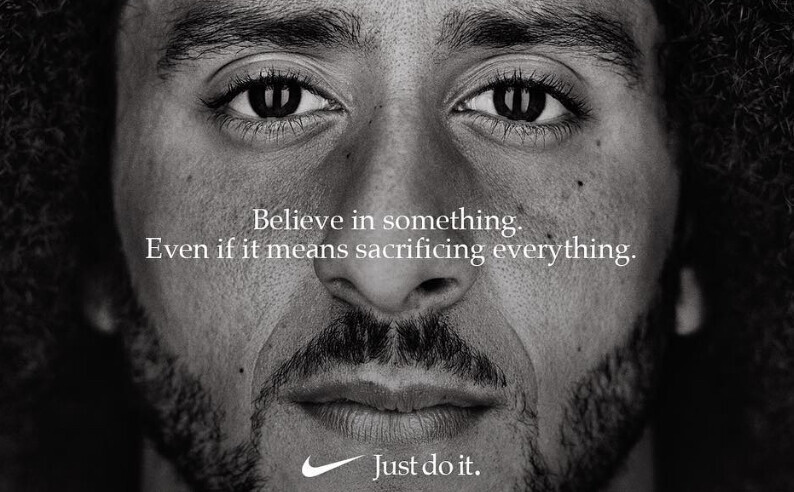
Mission statements and taglines are important marketing messages for your business, but they aren’t interchangeable with your value prop.
Why?
Because a value prop is a concrete statement related to your product or service.
Here’s Nike’s value proposition for its custom shoe range:
“Your personal Nike co-creation starts here. Make something they’ve never seen before by creating your own iconic sneakers with Nike By You.”
This UVP is specific to the product. It tells customers what makes Nike By You offer the perfect solution for their current need in a way that a mission statement or tagline can’t.
In short:
- Mission statement = business goal
- Tagline = brand essence or idea
- Value prop = product or service value
Unique Value Proposition vs. Unique Selling Proposition
Unique value propositions and unique selling propositions (USPs) are often used interchangeably.
But there’s a difference:
- A unique selling proposition describes what makes you stand out
- A unique value proposition explains why customers should care and what they get out of it
Here’s Robinhood’s USP:
“Investing for everyone.”
Robinhood is an investing platform that’s built for inclusiveness—no matter your level of investing experience. Its USP sells that benefit.
Now, here’s its UVP:
“Build your portfolio starting with just $1. Invest in stocks, options, and ETFs at your pace and commission-free.”
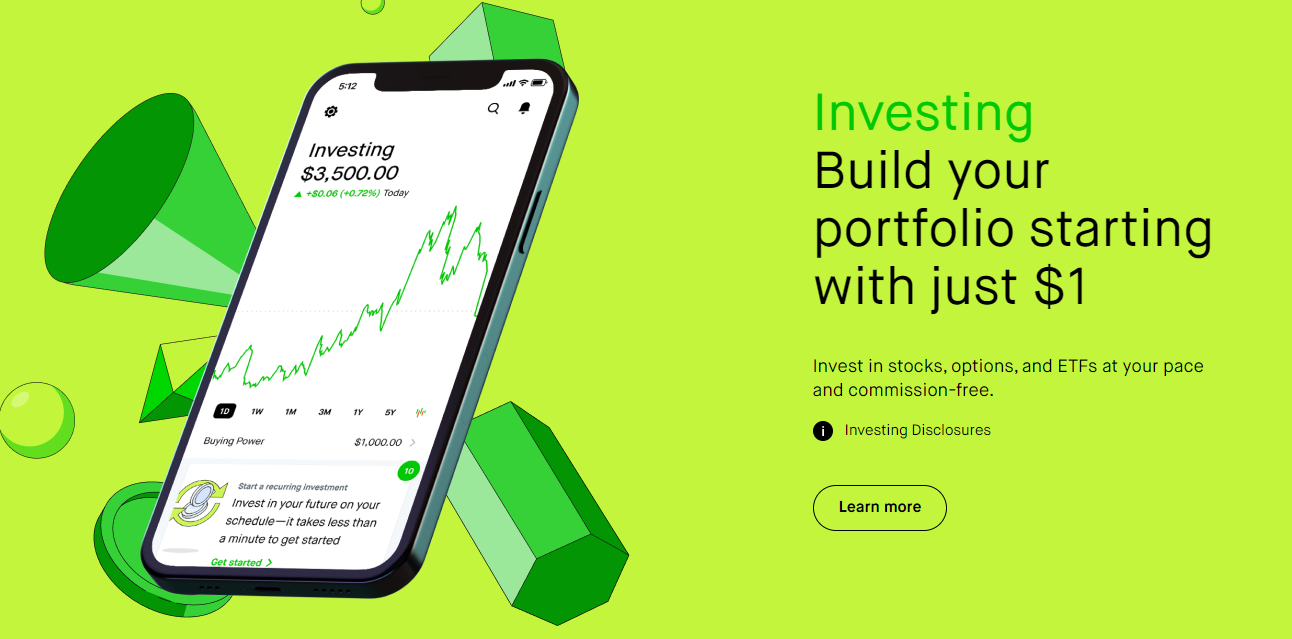
The UVP helps customers see the tangible value of the product.
Because a unique selling point captures what’s special about your product, you can use it to craft a value prop.
For example, Robinhood’s UVP headline “build your portfolio starting with just $1” informs its USP. $1 is a low barrier to entry. It’s another way of saying “investing for everyone.”
Both unique selling points and value props should feature prominently in your marketing strategy.
You can use USPs to pique your audience’s interest. UVPs encourage potential customers to act on their interest.
What Does a Great Unique Value Proposition Look Like?
A compelling value proposition:
- Is concise and easy to understand
- Is memorable
- Tells a customer what they’ll get from buying your product or service
- Explains how your offer is different from the alternatives
To immediately communicate value to the reader, a UVP typically has three main elements:
- An attention-grabbing headline that explains the main benefit
- A subheadline, paragraph, or bullet points that explain what you offer and why it’s useful
- An image, graphic, or video that shows the product or service and reinforces the message
Trello’s homepage demonstrates what a strong value proposition looks like:
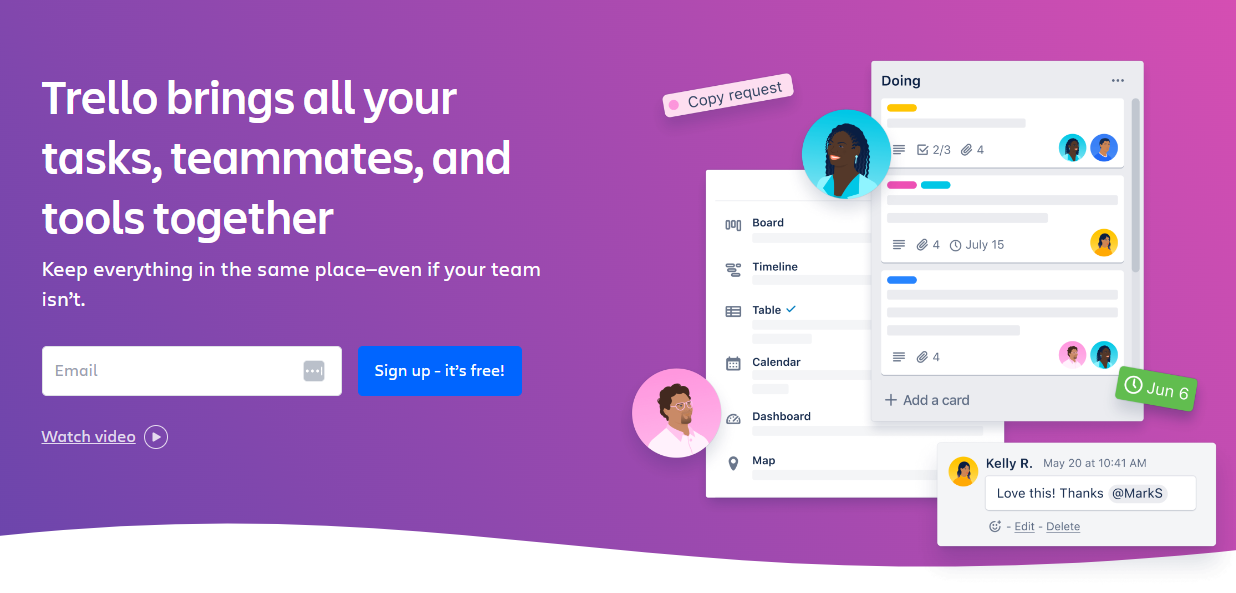
Here’s why it works:
- The headline is a clear statement about what Trello does and who it’s for
- The subheading states how Trello helps remote teams stay organized
- A relevant image shows teams collaborating
In 20 words, Trello sells the value of its platform by telling people that they can manage multiple projects in one place.
It solves the problem of teams having to communicate across different channels and the various challenges that come with it (e.g., missed deadlines, prolonged tasks, endless email chains).
A good UVP might also include an additional selling point to win a customer over. These are small things that make an offer a little bit more attractive.
In the above example, Trello adds “Sign up – it’s free” in its call-to-action (CTA). “It’s free” is a valuable add-on for budget-conscious customers.
Other common selling points include:
- Free shipping
- Next-day delivery
- No contract
- Cancel any time
- Buy now and save
These elements can tip the scales in your favor and convince a customer to choose you over a competitor.
Types of Unique Value Proposition
Unique value propositions typically fall into one of four themes:
- Best value product or service
- Best quality product or service
- Most luxurious product
- Staple (must-have) product
These themes reflect buyer motivations. People often purchase based on one or more of the following:
- Bang for the buck: They want the best quality-to-price ratio possible.
- Reputation: They want the market leader or company with a proven track record.
- Status: They want a product or service that signifies luxury.
- Necessity: The product is a must-have (e.g., a pipe wrench is essential for a plumber).
A great value prop delivers what customers value most by focusing on these factors.
For example, Slack’s value prop plays on its reputation as a leader in business messaging platforms:
“Slack is the platform that companies trust and people love to use.”
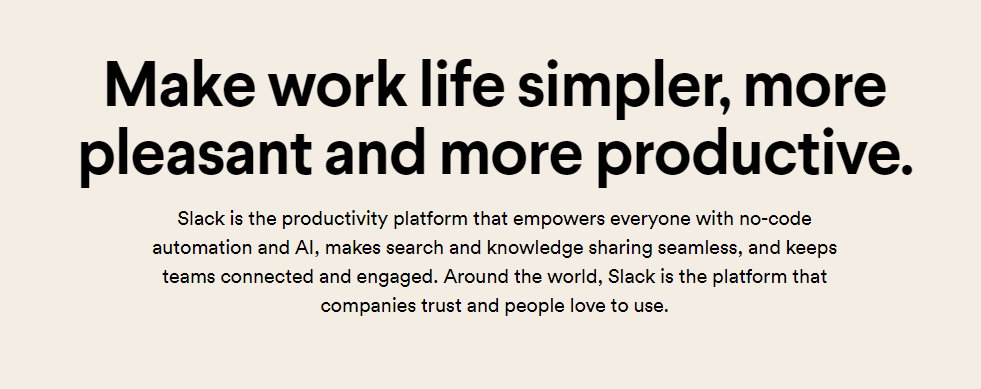
Its rival, Chanty, focuses on bang for the buck:
“Join Chanty – easy-to-use team collaboration tool. Get secure unlimited messaging free forever.”

Both tap into what customers want. Slack’s customers want the market leader. Chanty’s customers want an affordable alternative to Slack.
Before you work on your value proposition, be clear on what you want to deliver to customers.
- Are your products and services more affordable than the competition?
- Are you a more well-known brand?
- Do you offer luxury products or services?
- Do you offer products and services that customers can’t live without?
Semrush’s Market Explorer tool can help you find where you fit in your target market by curating insights on your competition.
Click “Find Competitors.” Then, enter your website URL and hit “Research a market.”
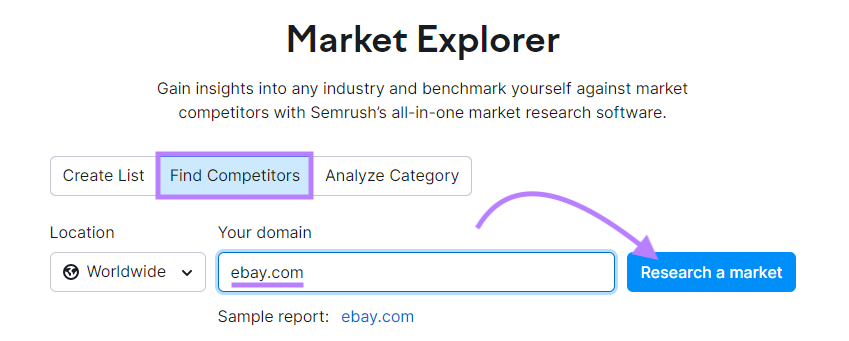
The tool generates a list of the major brands in your industry.
The “Overview” tab shows you who your biggest competitors are. It also visualizes their market share, audience behavior, and growth rate.
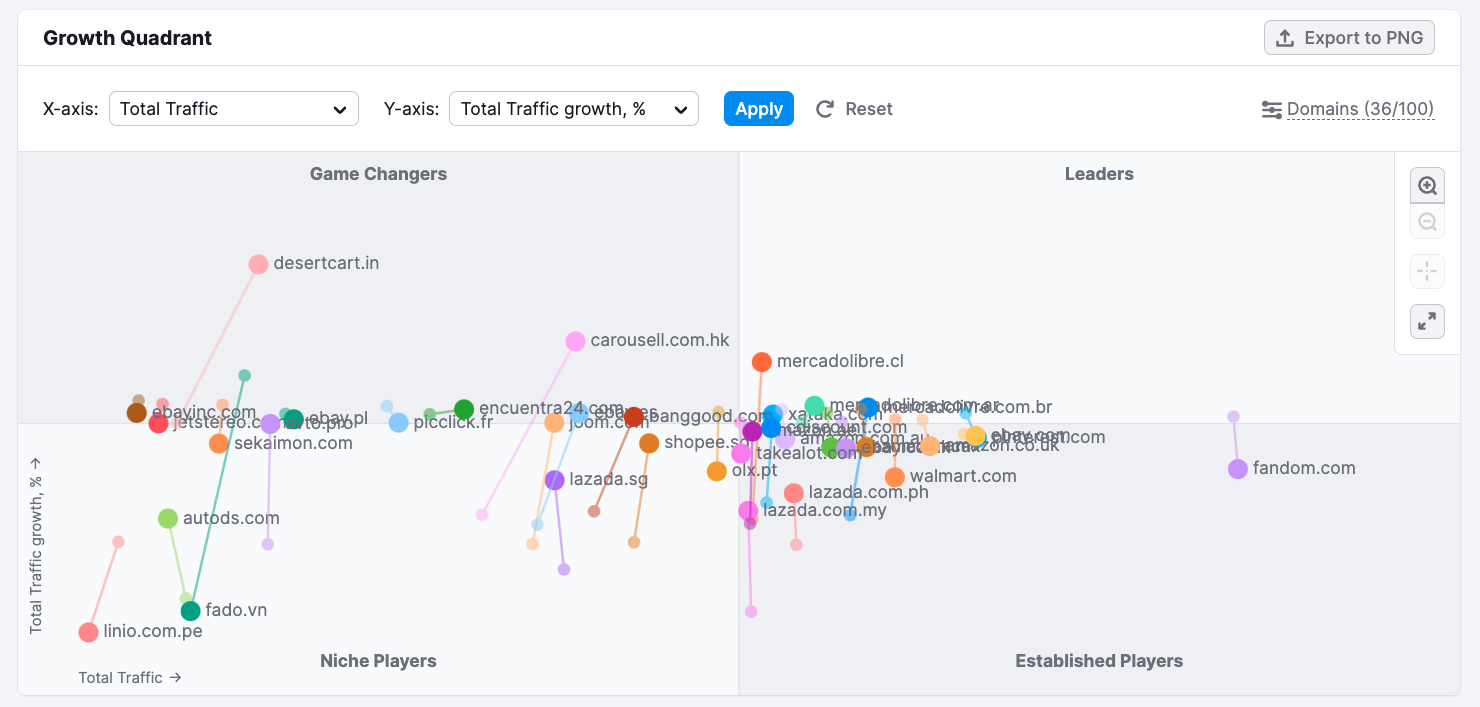
For now, all you need are names. Manually search for more details about the players who occupy the same space:
- How do they position themselves?
- What benefits does their UVP focus on?
- How do your products or services compare to theirs?
This initial research will give you an idea of what your UVP needs to get across.
The next step is to dig deeper into customer needs and how you meet them.
How to Create Your Unique Value Proposition
For your value prop to hit the mark, you have a deep understanding of your audience, your offering, and how your product or service fits into the customer’s world.
Don’t write a UVP based on what you think you know. Base it on research and testing so you’re sure it will attract your target audience.
Here’s how to develop your unique value proposition:
Conduct Customer Analysis to Find Key Pain Points
Customer analysis involves using data to understand your audience’s pain points, wants, and needs.
If you know what makes your customers tick, you can craft a UVP that speaks their language.
To get started, pick 5-10 of your most loyal customers from your CRM (customer relationship management) platform to survey or interview.
If you don’t have many (or any) customers yet, you can find people to interview by:
- Asking members of relevant groups on Facebook, LinkedIn, or niche forums
- Reaching out to social media followers or people who engage with your competitors
- Attending industry networking events
- Partnering with a market research company
Ask participants questions related to their buying motivations. For example:
- What are the main issues you face with X?
- What did/do you look for in X?
- What did/do you want X to help you achieve?
- Do you prefer X over Y? Why is this?
- How much would you pay for X?
Supplement your surveys or interviews with customer feedback. Look at:
- Customer reviews
- Brand mentions on social media
- Social media messages
- Customer support requests
These sources are all valuable in understanding your audience’s pain points and goals.
Look for common themes in your research. If you spot the same needs, problems, and motivations popping up, you can address them in your value prop.
Learn how to perform market and customer research step by step in the following guides:
- The Complete Guide to (Effective) Customer Analysis
- Market Research: What It Is & How to Do It
- How to Create an Ideal Customer Profile Template
Find What Differentiates Your Product or Service
Your differentiators are the distinct and unique value that sets you apart from the competition. They’re the reasons for customers to choose you over a rival.
To find your differentiators, ask yourself: What does my product or service do better than anyone else?
Write down specific benefits that customers find valuable about your product or service.
This might be your materials, product functionality, customer service, or price. Your customer research will help with this task.
Apple, for example, lists its design philosophy and closed product ecosystem as differentiators.
These help Apple’s products feel more exclusive and premium than Android smartphones, where multiple brands share the same software.
As you make your list, be careful not to include qualities that others can copy.
For example, “free shipping” is a positive and powerful add-on to your UVP. But it doesn’t differentiate you.
When you have your list, create a competitor comparison chart to rank your strengths against others.
A comparison chart is as simple as a side-by-side list. You can expand this to include several competitors. For example, this simple chart compares five competitors in the categories of organic search, paid search, and local search.
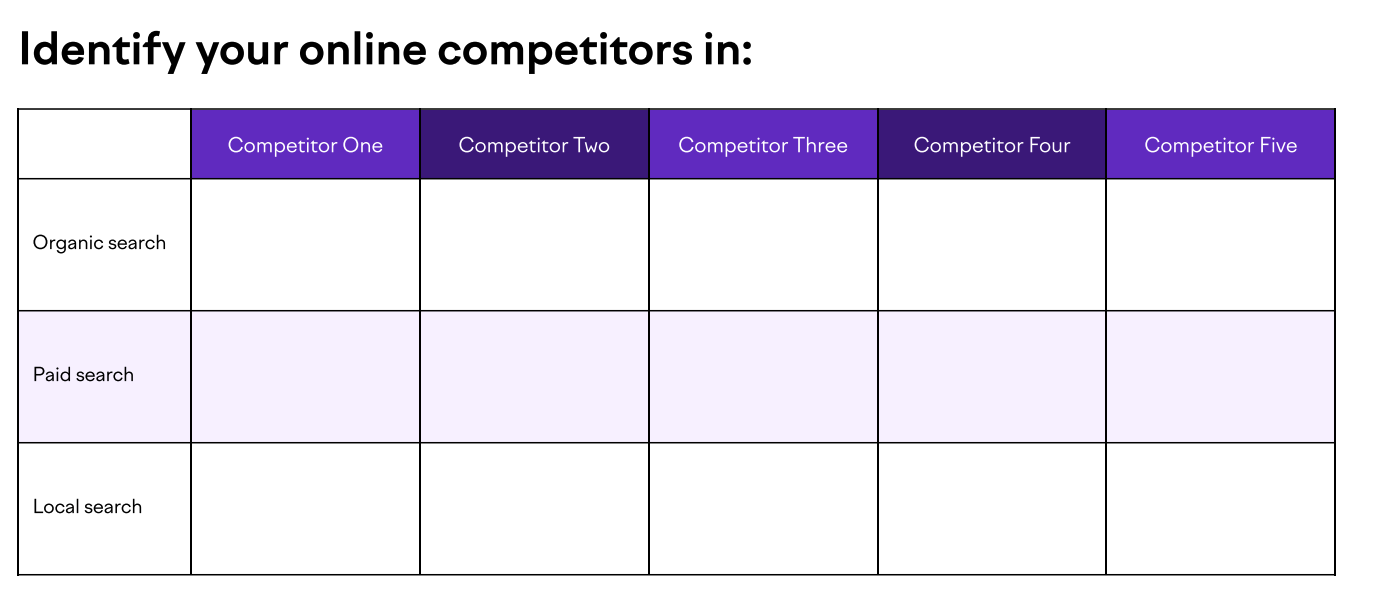
Use the Market Explorer tool to find 3-5 competitors in your space. Write down how each product or service solves a pain point for customers.
Cross off anything on your list that your rivals also claim to offer.
Whatever’s left on your list after this exercise is a differentiator. And a competitive advantage to highlight in your UVP.
Map Out a Value Proposition Canvas
A value proposition canvas explores the components of your company that contribute to a strong UVP.
It’s designed to help you gain clarity about the value of your product or service and how it fits with what the customer wants.
The below template has two main sections: customer profile and value proposition map:
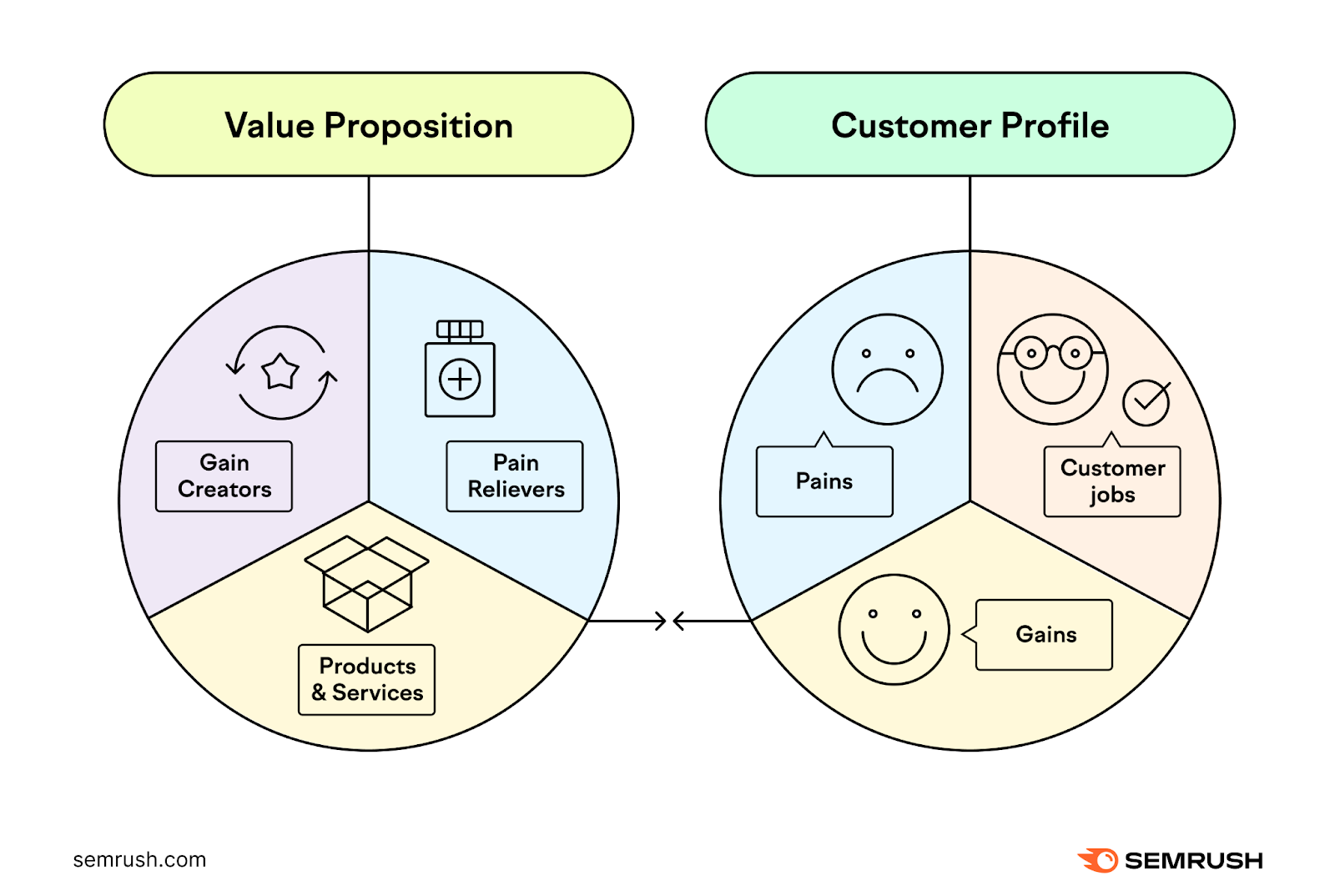
Start with the customer profile. You can use what you’ve gathered from your customer analysis to complete this section.
- Gains: What do customers expect and need from you to buy your product or service?
- Customer jobs: What task does your customer need to complete, or what problem do they want to solve, with your product or service?
- Pains: What negative experiences or risks does a customer have when trying to solve their problems?
Now move on to the value proposition map. This describes what your product or service offers the customer:
- Gain creators: What features and benefits give your customers value and make them happy?
- Pain relievers: How does your product or service help customers overcome their pains?
- Products and services: What products and services do you offer that create the biggest gains and ease the most pain for your customers?
Organize elements by notating whether they’re “nice-to-have” or “must-have.”
For example, if you run an online coffee brand, coffee subscriptions are a “must-have.” These help customers get the type and amount of coffee they need.
Branded mugs are “nice to have.” They make customers happy, but they’re not essential to the core product.
When the value proposition map addresses the biggest pains and gains in the customer profile, you have a fit.
Write Your Unique Value Proposition
Now you’re clear on how you stand out from the competition, you can brainstorm ideas to find a unique value proposition.
To distil your insights into a concise statement, follow a unique value propositiontemplate like the Steve Blank formula:
“We help (X) do (Y) by doing (Z).”
This formula helps you emphasize benefits over features to appeal to your audience and their wants and needs.
For example, a unique value proposition for a web design agency might be:
“We help small business owners grow their audience with attractive, affordable websites.”
Alternatively, you can try Geoffrey Moore’s value positioning statement.
Introduced in his book “Crossing the Chasm,” Fortune 500 companies use his formula to create their UVP by getting specific on industry, category, and value:
“For (target customer) who (need or opportunity), our (product/service name) is (product category) that (benefit).”
Using this method, a value prop for a web design agency might be:
“For small businesses who want to grow online, Rockstar Websites is an ecommerce platform that lets you turn visitors into customers without technical expertise.”
Steve Blank’s formula might inspire a compelling headline, while Geoff Moore’s method might help you come up with important benefits for a subheading.
But this is a creative exercise. So don’t worry if you don’t strictly follow each template.
The idea is to use them to articulate your value prop and spark creativity.
Test Your Unique Value Proposition with a Small Audience
The true test of a UVP is in your target audience’s reaction. Testing gives you valuable insights into what resonates and what needs to improve in order to optimize your conversion rate.
To do it, you’ll need to show your value proposition statement to your target audience.
Return to the customers you interviewed to get their feedback or use a tool like Wynter to put your message in front of your target demographic.
Find out if:
- They find the message clear
- They find the message relevant
- They want the value promised
- They want to choose you over an alternative
Another good way to test your value prop is to create two options and split test them.
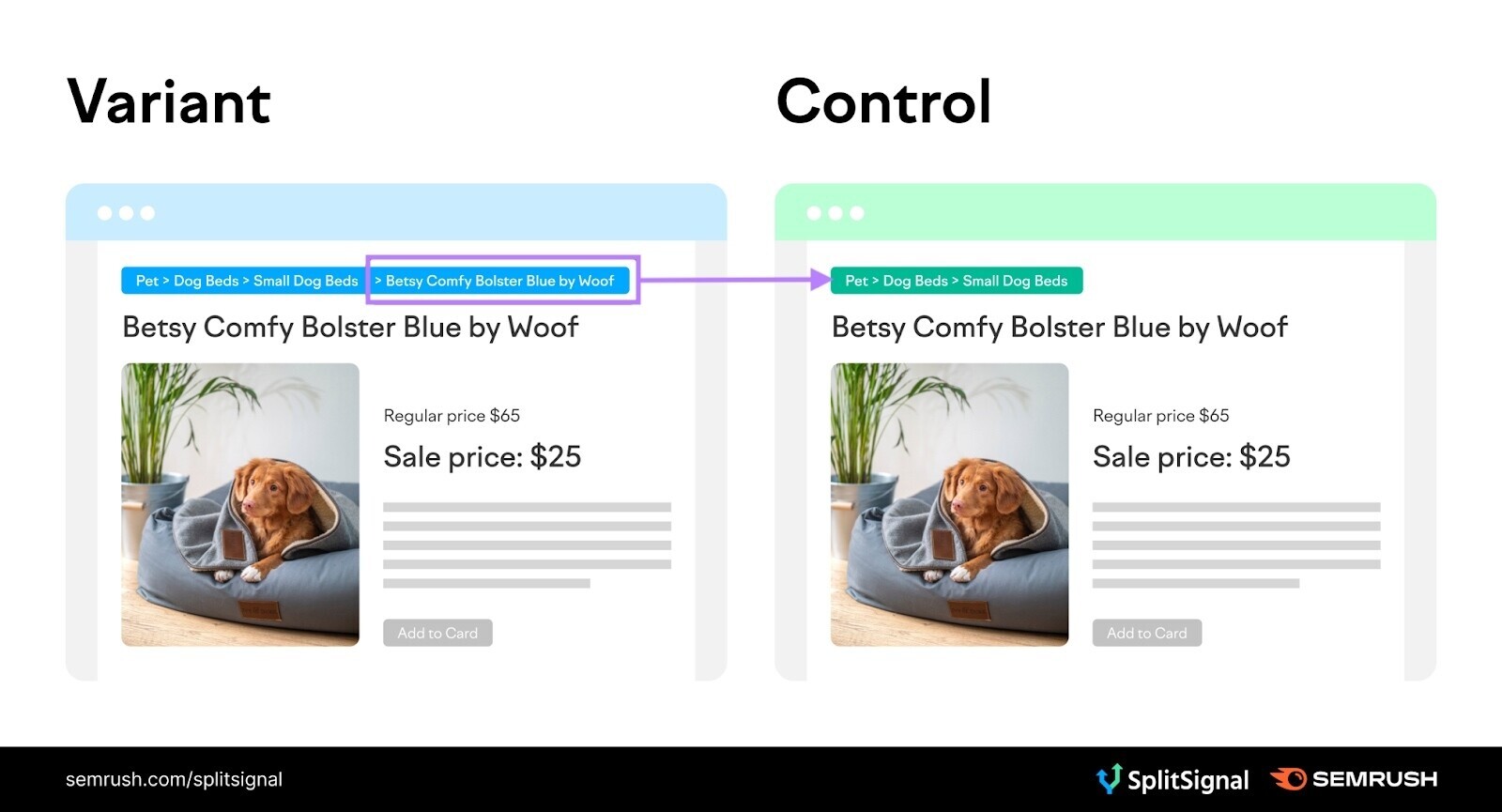
A split test (also called an A/B test) works by showing 50% of a test audience version A (your original UVP), and 50% version B (a modified UVP).
Modifications might include tweaks to your headline, subheading, value add-ons, or image.
The version that produces the best results (clicks, leads, phone calls, purchases, etc.) wins.
Say you test two versions of your UVP on different landing pages and more people engage with version B. That’s the value prop to move forward with.
To get started with split testing, check out the following guides:
7 Effective Value Proposition Examples
One of the best ways you can learn about what makes a strong UVP is by analyzing examples.
Here are seven great value props and why they work:
1. Evernote
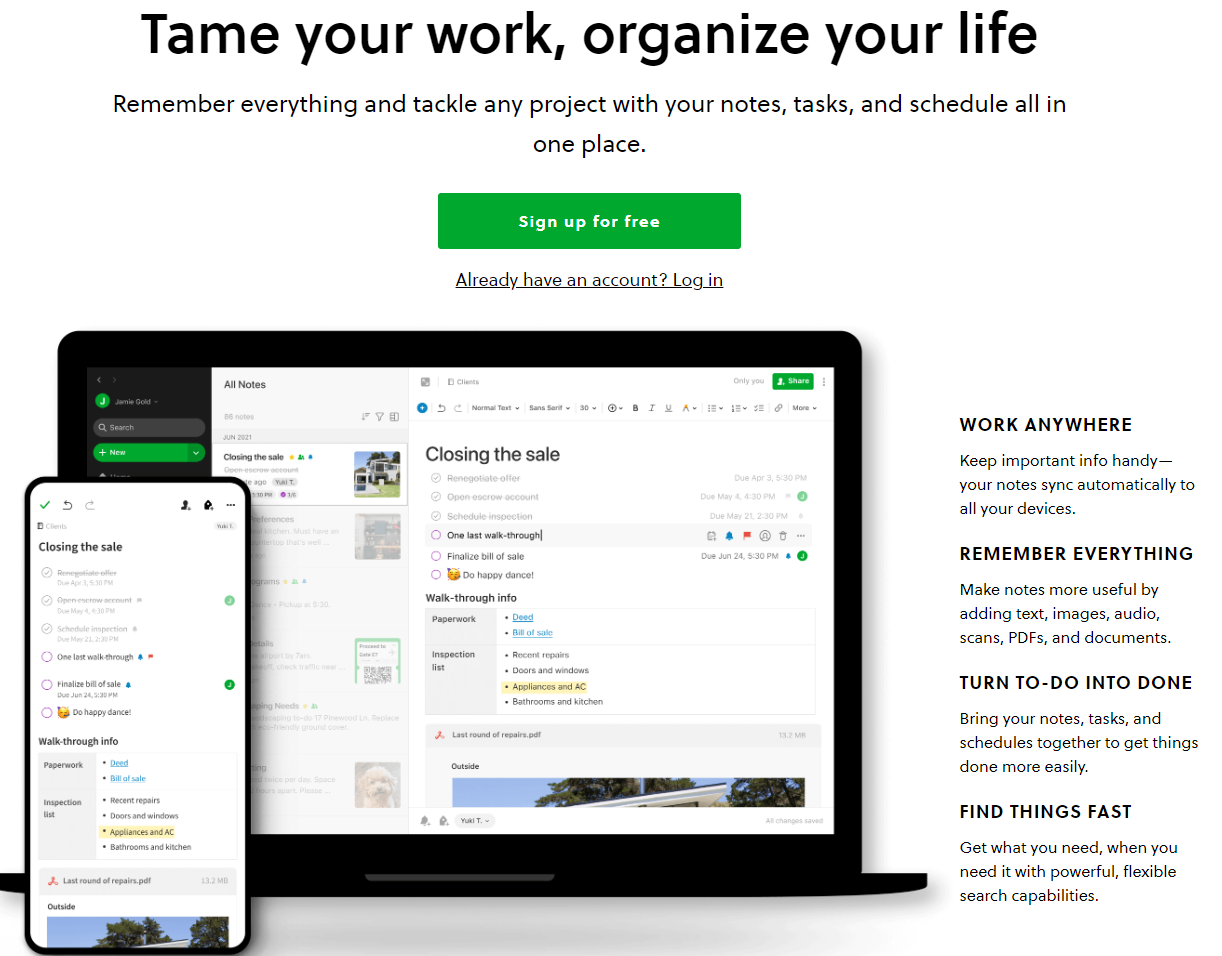
Why it works:
- Clearly explains the main benefit of Evernote (“organize your life”)
- Subheading solves customer pain points (“remember everything,” “all in one place”)
- Strong product image
2. Grammarly
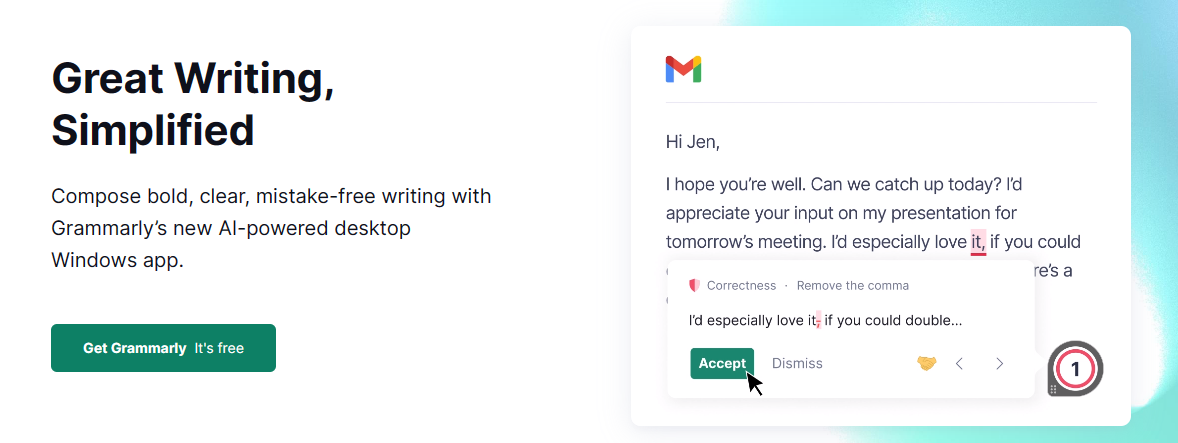
Why it works:
- Clear and concise explanation of what the product helps customers do
- Video shows how Grammarly works
- Good use of selling point add-on (“Get Grammarly. It’s free”)
3. Stripe
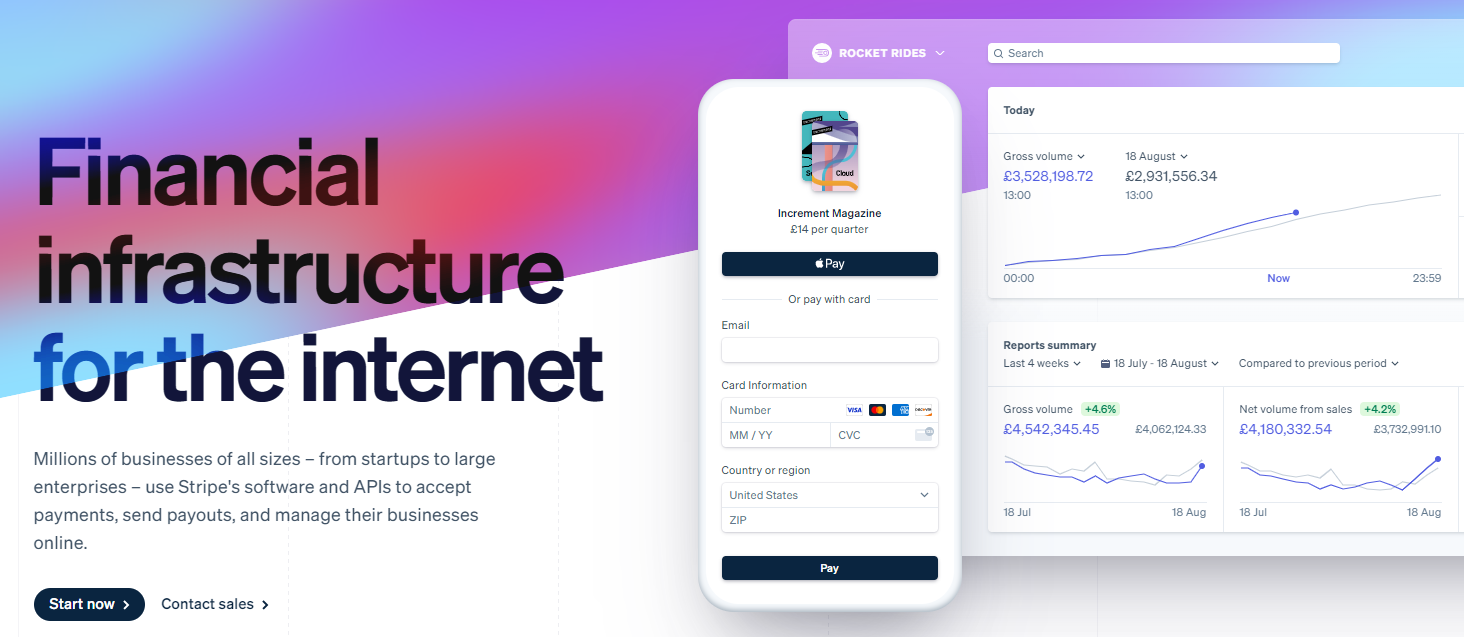
Why it works:
- Headline makes it clear what the product is and who it’s for
- Strong benefit-led subheading
- Positions Stripe as an authority (“Millions of businesses of all sizes” use Stripe)
4. Uber
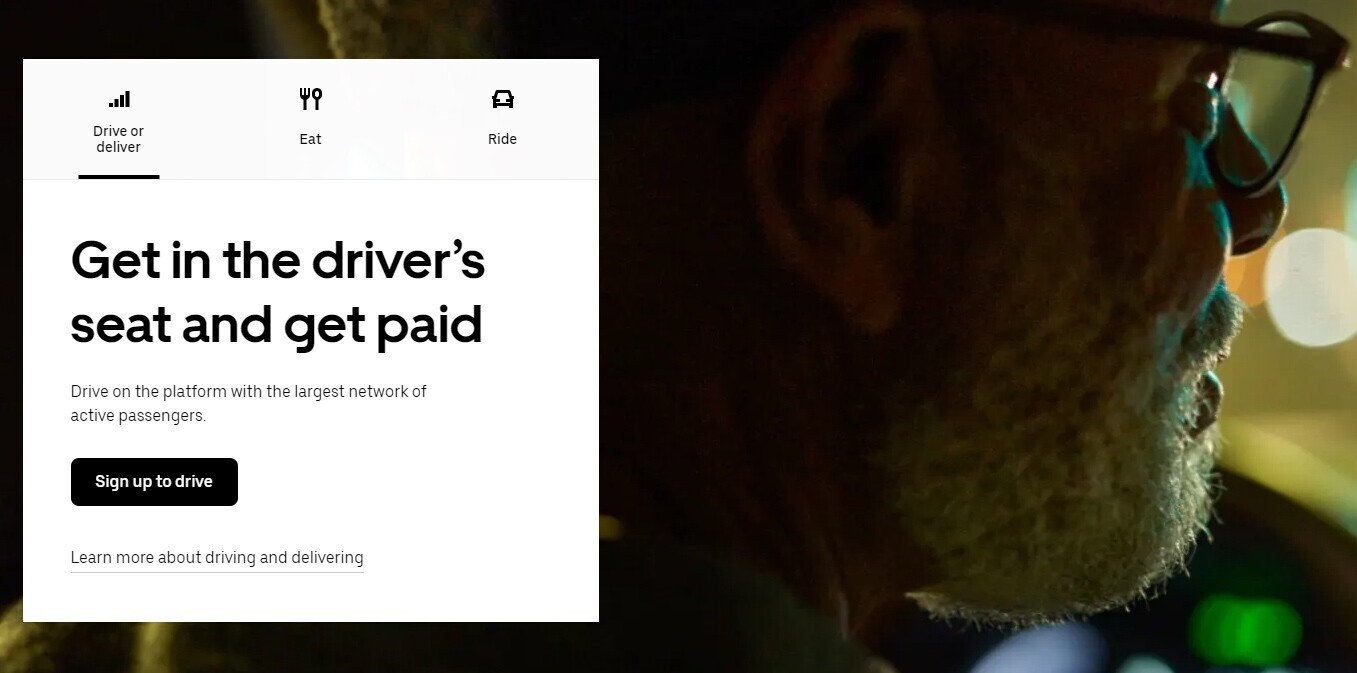
Why it works:
- UVP is concise and value-led
- Headline suggests customers can earn money quickly and easily
- Subheadline assures Uber drivers of work (“largest network of active passengers.”)
5. WordPress
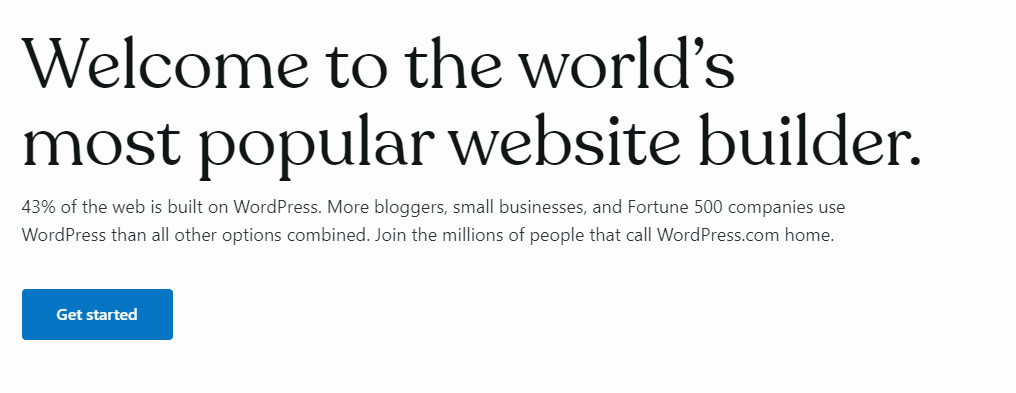
Why it works:
- Headline positions WordPress as the best choice (“The world’s most popular…”)
- Subheader adds context to the headline to build trust
- Use of social proof adds authority (“43% of the web is built on WordPress.”)
6. Mailchimp

Why it works:
- Value-focused headline sells the main benefit
- Subheader tells customers what they can achieve
- UVP positions Mailchimp as the market leader
7. EveryPlate
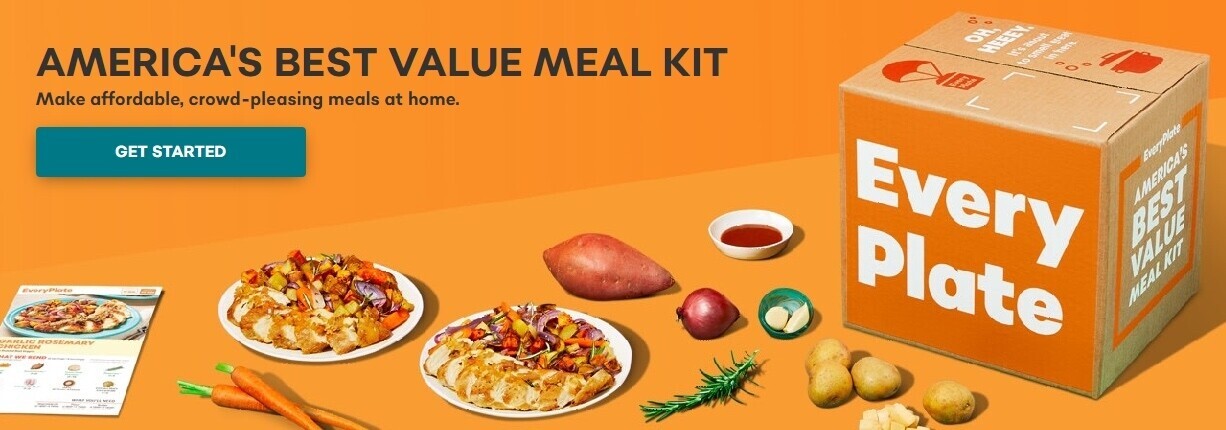
Why it works:
- Headline shows EveryPlate’s authority and status (“America’s Best Value Meal Kit”)
- Subheader meets a customer need (avoid trips to the store, save time in the kitchen)
- Relevant image shows the product package, contents, and end result
Value Propositions Evolve with Your Customers
A great value proposition appeals to what customers want or need at the time.
But objectives can change as markets shift and your business evolves. So it’s important to revisit your value props.
Listen to your customers. Make a habit of gathering feedback about your product or service. Try a template like Strategyzer’s Value Proposition Canvas.
And use Semrush’s Market Explorer to monitor your competition and market position.
Prioritize insights over assumptions. The more you know, the easier it is to create unique value propositions that make your brand the best choice.
